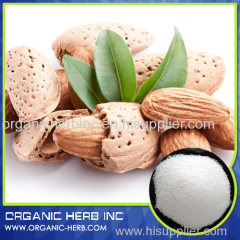|
organic herb in
|
Rhodiola rosea extract / Rhodiola sachalinensis P.E.
| Price: | 20.0 USD |
| Payment Terms: | T/T,L/C,WU |
| Place of Origin: | Hunan, China (Mainland) |
|
|
|
| Add to My Favorites | |
| HiSupplier Escrow |
Product Detail
Rhodiola is a genus of perennial plants in the family Crassulaceae[1] that resemble Sedum and other members of the family.
Basic Information of:
· Product Name: Rhodiola rosea extract / Rhodiola sachalinensis P.E.
· Latin Name: Rhodiola Rosea (Prain ex Hamet)Fu
· Part Used: bark root
· Active Ingredient: 3%Rosavin, 1%Salidroside
· Test Mothod: UV/HPLC
· Extraction method:water/acohol extraction
What is?
Rhodiola is a genus of perennial plants in the family Crassulaceae[1] that resemble Sedum and other members of the family. Like sedums, Rhodiola species are often called stonecrops. Some authors merge Rhodiola into Sedum.
Rhodiola species grow in high-altitude and other cold regions of the Northern Hemisphere. Den virtuella floran gives the number of species as 36,the Angiosperm Phylogeny Group gives it as 60, and the Flora of China gives it as about 90, with 55 in China and 16 endemic there.The USDA Plants database lists only 3 species in the United States and Canada.
Among the distinguishing characters of the genus are two series of stamens totaling twice the number of petals; free or nearly free petals (not joined in a tube); a stout rhizome from whose axils the flowering stems rise; and a basal rosette of leaves. This genus contains the only species of Crassulaceae that have unisexual flowers.
The Holarctic species Rhodiola rosea is used in al medicine. A number of species are grown as ornamentals, but growing them is difficult outside their native subarctic and alpine climates.
The name combines the Greek rhodon, meaning rose and referring to the rose-like smell of the roots, with the Latin diminutive suffix -iola.
Main Function of Extract:
Research regarding R. rosea efficacy is contradictory. While some evidence suggests that the may be helpful for enhancing physical performance and alleviating mental fatigue, methodological flaws limit accurate assessment of efficacy. A rigorously-designed well reported RCT that minimizes bias is needed to determine true efficacy of R. rosea for fatigue.[7]
R. rosea is not approved by the U.S. Food and Drug Administration (FDA) to cure, treat, or prevent any disease. In fact, the FDA has forcibly removed some products containing R. rosea from the market due to disputed claims that it treats cancer,anxiety, influenza, the common cold, bacterial infections, and migraines.
Application of of extract:
1,used in Food industry, The aerial portion is consumed as food in some parts of the world, sometimes added to salads.
2,used in medicine industry, The plant has been used in traditional Chinese medicine, where it is called hong jing tian . The medicine can be used to prevent altitude sickness.
3,etc





















